To mark the launch of the Chartered Insurance Institute’s new logo, Genevieve Adeline is delving into our historical collection to look at some of the rich symbolism that the insurance industry has utilised in its branding over the centuries.
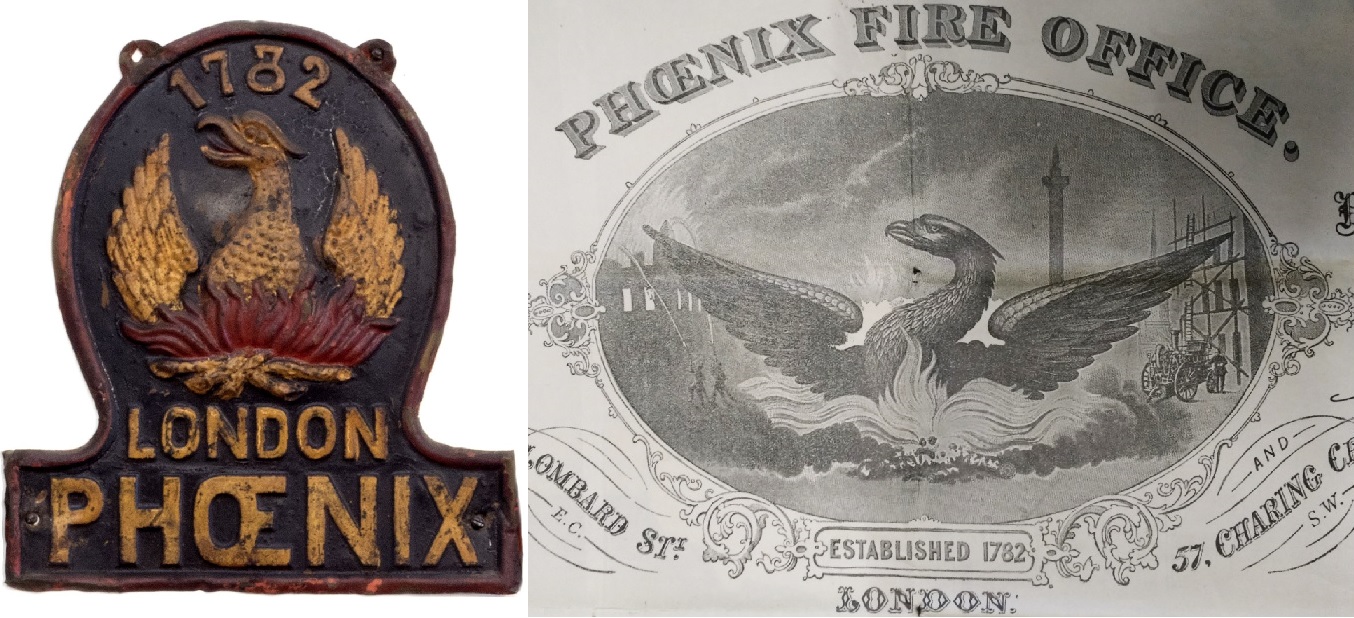
The phoenix, a magical bird that dies in a blaze of fire and is reborn out of the ashes, is an ancient Greek mythical creature that many will be familiar with as it still regularly features in popular culture. The creature is mythologically associated with the rising and setting of the sun and has been used to represent the development of civilisations as well as the cycle of personal fortunes. Its relevance to fire insurance is clear, but the reason for the ubiquitous presence of the salamander in fire insurance imagery is perhaps less obvious.
The salamander has come to be closely associated with fire insurance because of the folklore associated with the animal. Within European folk tradition, the salamander is said to be invulnerable to fire and born from the flames and has been treated by occultists as the elemental spirit of fire. These ideas about salamanders are found in the writings of Pliny the Elder, St Augustine and Leonardo da Vinci.

These beliefs are thought to originate from the animal’s habit of climbing inside rotting logs which are then used as firewood. As the temperature rises, the salamander flees the fireplace giving the impression that it has magically appeared in the fire.
The sun is a symbol that appears regularly, most notably in the material produced by the Sun Fire Office, but also in various other places:
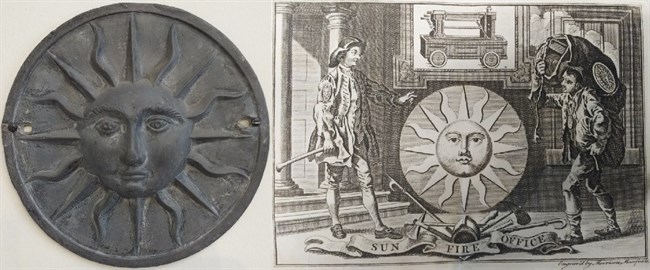
What is notable is that the imagery personifies the sun and is associated with sun deities. In Greco-Roman mythology the sun god, Helios, was usually depicted with a crown of sunbeams (this is the origin of halos in Christian art). The symbol, which has a face and alternating straight and wavy beams (that also appears on the Argentinian and Uruguayan flags), is the design European artists used to depict the Incan sun god, Inti.
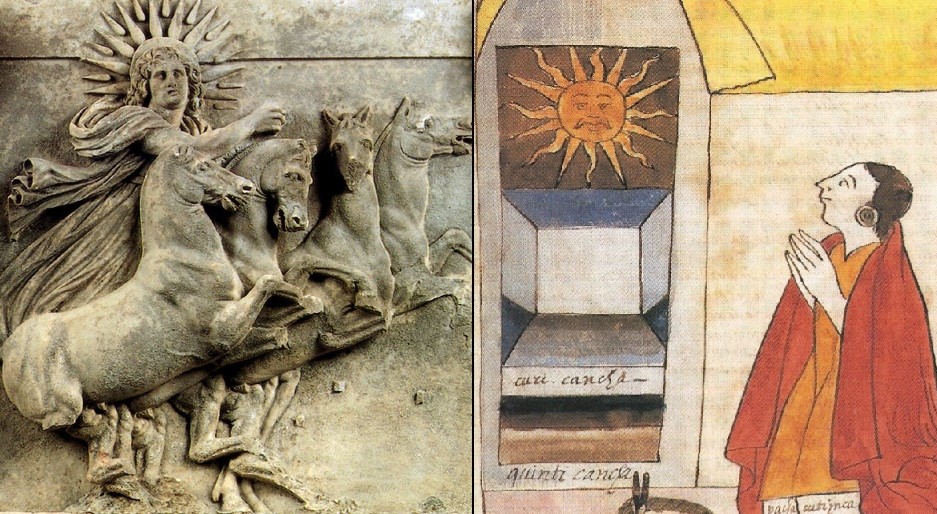
Helios in his chariot – Athena’s temple, Ilion (Early 4th century BCE) / Depiction of Pachacuti worshipping Inti – Qurikancha, Peru (17th century CE)
There were also designs that directly referenced an Abrahamic deity:
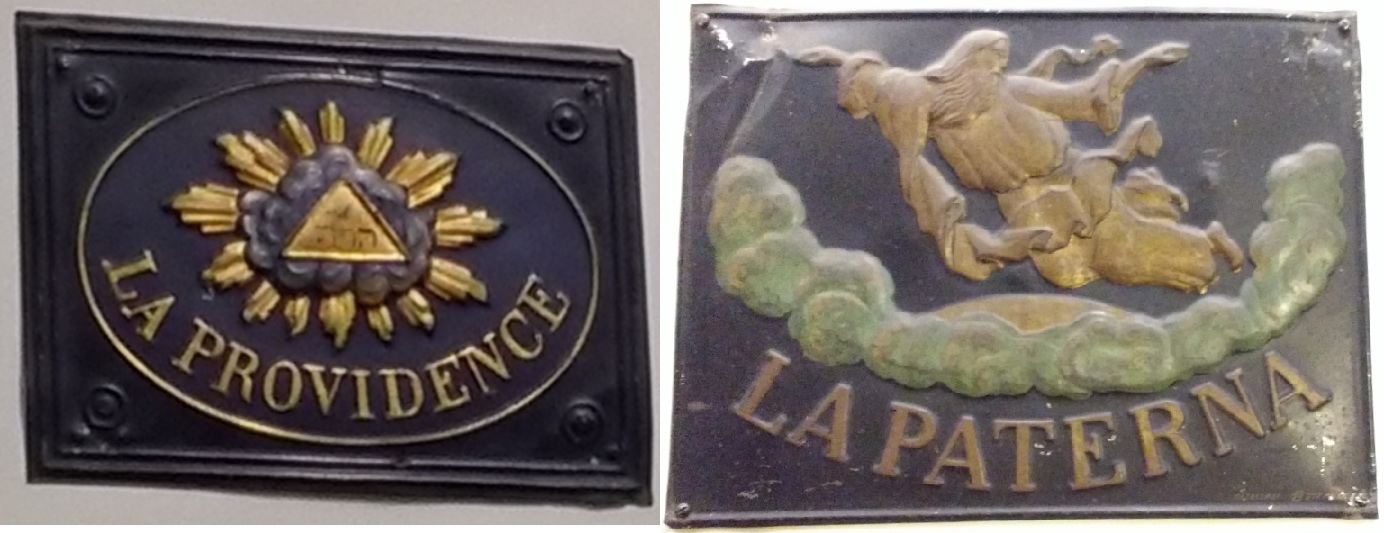
The goddess of fortune with a cornucopia is another widely used image, and she is often shown providing comfort in a moment of tragedy:
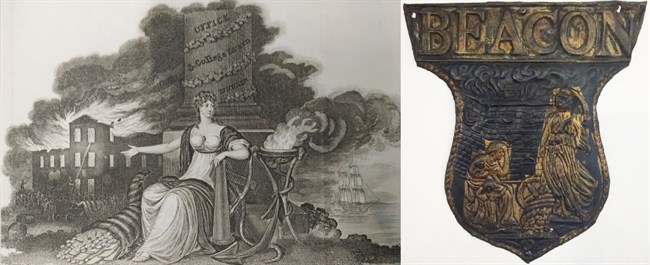
The Roman goddess Fortuna is often shown with the wheel of fortune (a symbolic representation of the changeable nature of luck) and bearing a cornucopia. The cornucopia is a horn overflowing with agricultural produce which symbolises abundance and nourishment. In the myth, the horn belonged to the goat, Amalthea, who nursed Zeus in his infancy, while playing Zeus broke the horn and it transformed into an unending source of nourishment to mirror the nourishment Amalthea had provided.
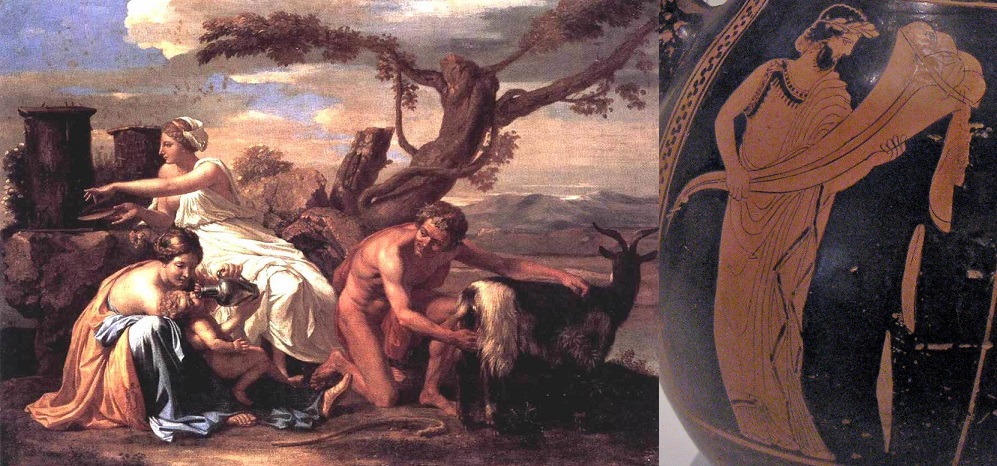
The Infant Zeus Nurtured by the Goat Amalthea. By Nicolas Poussin (1594-1665) / Plouton with a cornucopia and Demeter with a sceptre and plough. By the Orestes Painter (440-430 BCE)

